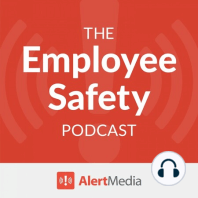26 min listen

Protective Intelligence: Identifying Risks Before They Become Threats
Protective Intelligence: Identifying Risks Before They Become Threats
ratings:
Length:
18 minutes
Released:
Feb 24, 2021
Format:
Podcast episode
Description
It sounds like sci-fi, but there’s an effective way to predict critical events before they occur. It’s called protective intelligence, and it could be the key to emergency preparedness.
In this episode, Peter chats with Lukas Quanstrom, CEO & Co-Founder of Ontic, about how organizations can identify risks before they become threats.
Some topics they cover are:
What protective intelligence means
Ways to actively manage known threats
The importance of clear communication in times of crisis
How adopting a proactive approach to security can help prevent crises
Making situational awareness a company mission
Resources mentioned in this episode:
The Ontic Center for Protective Intelligence
Follow Lukas Quanstrom on Twitter
The Employee Safety Podcast is hosted by Peter Steinfeld, SVP of Safety Solutions at AlertMedia.
You can find this interview and many more by subscribing to The Employee Safety Podcast on
In this episode, Peter chats with Lukas Quanstrom, CEO & Co-Founder of Ontic, about how organizations can identify risks before they become threats.
Some topics they cover are:
What protective intelligence means
Ways to actively manage known threats
The importance of clear communication in times of crisis
How adopting a proactive approach to security can help prevent crises
Making situational awareness a company mission
Resources mentioned in this episode:
The Ontic Center for Protective Intelligence
Follow Lukas Quanstrom on Twitter
The Employee Safety Podcast is hosted by Peter Steinfeld, SVP of Safety Solutions at AlertMedia.
You can find this interview and many more by subscribing to The Employee Safety Podcast on
Released:
Feb 24, 2021
Format:
Podcast episode
Titles in the series (100)
Incorporating External Communications Into Crisis Management by The Employee Safety Podcast